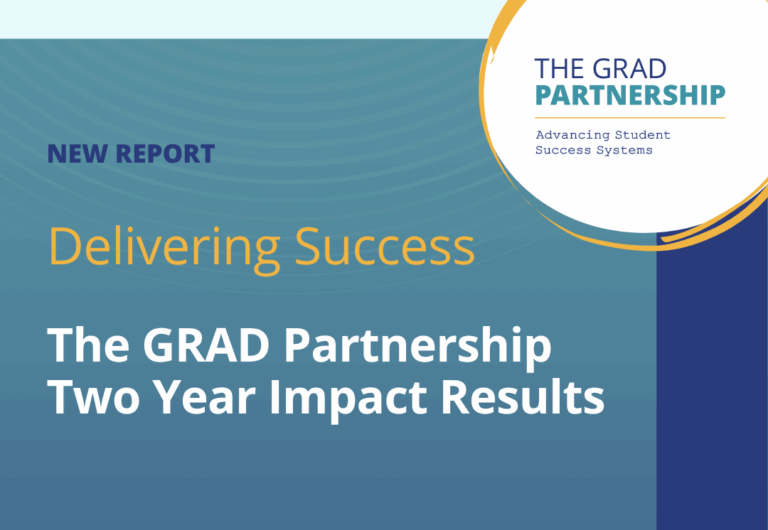
Delivering Success: The GRAD Partnership Year Two Results
Schools implementing student success systems with GRAD Partnership support continue to achieve substantial progress in reducing chronic absenteeism and course failure rates — two strong predictors of high school graduation and postsecondary success. After two years of implementation work, schools, on average, experienced a 32% decline in the percent of students failing one or more courses, and a 28% decline in chronically absent students.

RISE Network’s On-Track Coaching Evaluation Report
On May 1, 2025, GRAD Partnership organizing partner, RISE Network, released a new study demonstrating the efficiency of the On-Track (Student Success) Coach strategy
Student Attendance Teams
Resources to support student-led attendance teams.
Amplifying Youth Voice: Strategies for Helping Youth Have their Voices Heard
Student voice—the process of educators, school leaders, and other supportive adults gathering young people’s values and unique perspectives and implementing policy and practice changes based on these shared ideas—provides an opportunity for young people to be active participants in improving their schools. In this resource we explain how student voice increases student engagement, enhances education systems, and improves student outcomes. We also share three strategies to support schools and community organizations with gathering student voice data.
The Inside Story of the National Graduation Campaign
A 20-year campaign to address America’s high school dropout crisis produced unprecedented gains in graduation rates nationwide. Can lessons from this campaign help the nation cross this elusive threshold and inspire action on other social issues?
Strengthening School Connectedness to Increase Student Success
May 2024 EdResearch for Action brief exploring evidence on strategies to build a sense of school connectedness and engagement among all students.
Meeting the Chronic Absenteeism Challenge – What Do We Know?
What does a doubling of the number of students who are missing a month or more of schooling in the school year mean? What do the numbers tell us about the challenges our schools and communities face, and what does the evidence base say about the types of solutions and responses that are needed to meet them?
Colorado Dropout Prevention Framework
This robust resource for district and school teams is grounded in the four core components of student success systems, and outlines five foundational practices and four strategies to reduce dropout rates and increase student engagement in learning, graduation rates, credit attainment, and preparation for postsecondary options.
How to Improve Your School’s Response to Chronic Absenteeism
This action planning tool from the GRAD Partnership includes guiding questions for school-based teams to use for understanding chronic absenteeism in their local context and strategizing for designing interventions to meet their specific needs. It also includes a Discovery Protocol to guide an optional team activity to foster insights and empathy. Use a printable version or an electronic fillable version. Tips for using this resource: Watch the webinar below to learn more about the tool
Attendance Plan Reflection Tools for State & Local Education Agencies (Student Engagement and Attendance Center)
The Student Engagement and Attendance Center developed these tools to guide SEA and LEA staff in a review of existing attendance plans and approaches to identify opportunities to strengthen those plans across instructional settings. This tool comprises considerations and reflection questions to help identify areas in which attendance guidance and supports can be strengthened. Additional student engagement and attendance tools created by Student Engagement and Attendance Technical Assistance Center (SEAC) can be found on the U.S. Department of Education website.